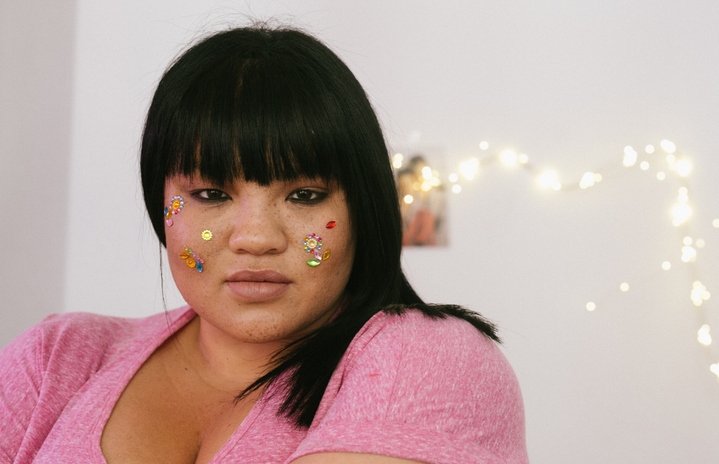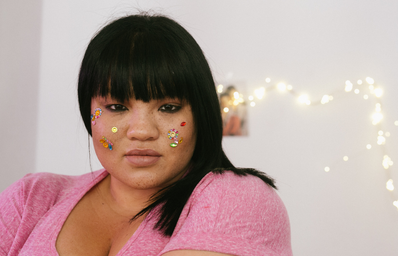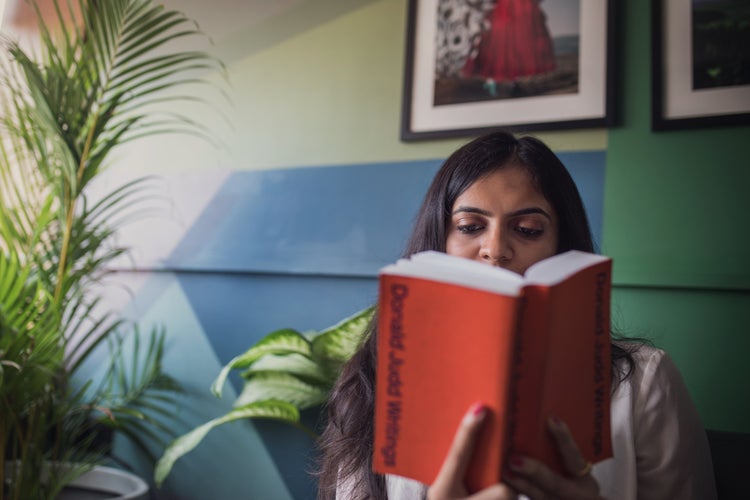Growing up as an avid reader, I rarely saw protagonists in books who looked like me. Lack of diversity and representation in literature has been a long-standing issue, but fortunately, the “Own Voices” movement has drawn attention to the importance of diverse storytelling. The hashtag #OwnVoices was coined by young adult author Corinne Duyvis in 2015 and was first used to recommend books by authors who shared the same identity as one of their main characters. Own Voices in literature helps ensure that stories are being told authentically; these stories can help young people of color feel seen, understood, and accurately represented.
According to a 2019 Diversity Baseline Survey conducted by Lee & Low Books, over 76% of publishing staff, review journal staff, and literary agents are white. This statistic represents a major flaw within the book industry — the dire lack of diversity and representation. Furthermore, many stories that are published in mainstream media are written by white authors and they portray white characters. According to the 2020 State of Racial Diversity in Romance Publishing report, within the past five years, only 8.1% of all published romance novels were written by authors of color. While the statistics went from 6.7% in 2017 to 8.3% in 2020, there is still a long way to go when it comes to representation in literature.
Young people of color don’t always see themselves represented in literature.
For years I had grown up believing that my story was one that wasn’t worthy of being front and center — that I was forever doomed to remain on the sidelines, on the fringes of someone else’s story. For the longest time, all the stories I read were about white characters written by white authors. Even when I was living in India, popular bookstores carried a disproportionate ratio of white to Indian authors. So, when I finally found brown protagonists — written by brown authors — telling stories of South Asian culture in mainstream publications, I was surprised.
Reading Counting Down With You by Tashie Bhuiyan for the first time changed my life. Although I had previously read books featuring South Asian protagonists, reading Bhuiyan’s book was the first time I recognized how deprived I had been of seeing my own culture in literature — and how much representation mattered to me. For the first time, I witnessed a protagonist whose life mirrored mine and whose face resembled my own. I realized I had been deprived of something I didn’t even know I could have.
Not only was it shocking to see my South Asian culture reflected in literature, but it was also amazing that people wanted to read real stories about my culture and community. In the past, I had only seen characters of color who were modeled after stereotypes that have become common in mainstream media. From Baljeet in Phineas and Ferb to Raj in The Big Bang Theory, most Indians are relegated to being highly studious people with similar personalities.
Bhoomi Sharma, 18, a freshman at the Parsons School of Design, tells Her Campus that she didn’t realize how little her culture was represented in literature until she finally saw her identity reflected in a book. “I’ve been reading fiction since I’ve had access to books,” she says. “But I was 15 years old the first time I encountered a South Asian protagonist. I came across Roshani Chokshi’s middle-grade series, Aru Shah and the End of Time. I think I cried the first time I read that book. Seeing this Indian girl on the page felt like I was meeting an echo of myself, a mirror of someone I’d always been, but was never able to see reflected in the books I consumed.”
“Own Voices” literature can make people of color feel less alone.
The #OwnVoices movement, which began on Twitter in 2015 thanks to author Corinne Duyvis, is one of the biggest genres in support of stories written by and about people of color. The term #OwnVoices was first used to describe books written by people who are part of the same diverse group as their protagonist.
While the various connotations behind the term “Own Voices” are complex, its core definition remains the same: “Own Voices” is a way to bring forth the voices of those whose stories have been hidden for far too long. These stories — which depict characters written by diverse authors of their respective cultures — are a way for people to see themselves reflected as authentically as possible. It also helps readers learn and understand more about cultures and communities that are different from our own. Seeing diverse groups reflected in literature doesn’t just introduce people to a vast variety of cultures and societies, but it also makes these underrepresented communities feel seen and accepted.
“Diversity is about representation,” Anu Mandapati, vice president, head of diversity, equity, and inclusion at Talking Talent, tells Her Campus. “When individuals who are underrepresented see and hear themselves in stories, they feel represented, included, and even accepted. They feel like they can fully be themselves — which results in a greater sense of belonging.”
Promoting only white stories in popular media can make people of color feel alone in their experience — as if their stories are not worthy of being a protagonist. This can lead to a sense of overall isolation. “Living is a lonely experience, and we use art to give ourselves human connection,” Bhoomi says. “But when none of the art you consume is something you can really connect to, there’s a sense of isolation that comes with it.”
People of color deserve to see themselves represented in media — and not just as token characters who are fulfilling a diversity quota. Often, tokenism occurs when people of color are included in a story simply to make it look “more diverse”; however, tokenization can lead to inauthentic representation and perpetuation of cultural stereotypes. It’s important that readers of color see fully-developed characters in books who are equally as important as the white characters who often dominate literature. Books like the Ember in the Ashes quartet by Sabaa Tahir and the Six of Crows duology by Leigh Bardugo are examples of true and authentic representation; in the books, diverse characters and cultures are represented authentically, and not just as an afterthought.
Books are more than just stories that provide us with entertainment. They can be an escape from reality, a place to find joy and acceptance. And when we are deprived of seeing our own stories and the stories of our people, it can make us feel separate from society. “I had never realized what I had been missing until one day I saw it in my hand,” says Bhoomi. “I still cry when I think about how lonely I was, how much I grasped these fictional words for these illusions of safety and friendship.”
Reading “own voices” literature can give you a valuable perspective on other cultures, communities, and experiences.
Stories about people of color are not just important for people of color, but they can have a positive impact on any reader. Reading stories about people from different walks of life provides us with points of view that perhaps we wouldn’t be exposed to otherwise.
Jason Black, a producer at The Black Channel, agrees that perspective matters and Own Voices books can help provide more insight into other people’s experiences. “It’s difficult to understand what someone has gone through and how they have gained their particular perspective without seeing specific examples and taking the time to do so,” Black tells Her Campus. “By reading diverse books, you’ll gain knowledge and get an idea of some of the experiences others have had to endure.”
Consistently reading these stories about people from different backgrounds not only allows us to walk in another person’s shoes but also builds empathy. According to clinical psychologist Dr. Sabrina Romanoff, a professor at Yeshiva University, reading stories from people of different backgrounds helps us understand one another better and makes us aware of perspectives that are not always readily available to us.
“When we read about diverse stories, we are better able to empathize and relate to people who are different from us,” Dr. Romanoff tells her Campus. “This allows us to foster greater relationships and empathy to people who we wouldn’t normally connect with otherwise by not only considering their perspective but cultivating empathy for their experience.”
“Own Voices” literature normalizes the experiences of young people of color and encourages a sense of belonging.
Seeing diverse people represented on the page from a young age can make a huge difference in how young people feel about growing up — from confidence to their overall sense of self.
“When books reflect their cultural values and humanize and celebrate their experiences, it builds a child’s sense of self,” Leopold and La Shauna Richardson, the co-founders of Kind Mirror Books, an independent book publisher specializing in children’s books that reflect the stories of Black and Brown children, tells Her Campus. “Diverse stories and characters give all children a chance to see their neighbors and themselves more fully and use the new perspectives they gain when interacting with others.”
According to a 2016 study conducted on multicultural literature published in the Schools Catalogue Information Service, reading multicultural stories — particularly about underrepresented groups — can make young people feel valued and provide them with a sense of belonging.
The impact of reading diverse stories is one that begins in childhood. According to data on books by and about Black, Indigenous, and people of color compiled by the Cooperative Children’s Book Center at the University of Wisconsin-Madison, less than 30% of children’s books released in 2020 featured characters of color. While this may be a higher number than in former years, 30% is still minor compared to the number of actual children of color who deserve to grow up witnessing book characters like themselves.
“I was so desperate for any sort of connection when I was younger, and it pains me to think of how hopeless I felt back then, how much more confident of a person I would be if I had these characters holding my hand as I grew into myself,” Bhoomi says. “We use these protagonists…we use storytelling to tell ourselves we’re worthy of love. So, when POC are robbed of seeing their stories on shelves, what are we telling them?”
While times are changing, the publishing industry has a long way to go.
While the book industry is ever-changing, its biggest hurdle at the moment is bringing underrepresented cultures and stories to the forefront. It’s important for the literature industry to arrive at a place where diverse books are part of the norm, and not something that needs to be constantly advocated for. It’s time for those of us in minority communities to see our own culture reflected on the pages of our favorite books. Someday, I hope it will no longer be surprising.
Change needs to start at the level of the publishers. Without proper representation among the publishers themselves, inclusivity in stories will not get where it needs to go. But there are spaces dedicated to shining a spotlight on stories by and about people of color.
Change takes time, and there are many literary organizations and book-friendly spaces that are working to get there. For example, We Need Diverse Books is a non-profit dedicated to advocating for “a world in which all children can see themselves in the pages of a book” by promoting children’s literature that represents people from all walks of life.
BookTok and Bookstagram also influence the publishing industry by providing a platform for creators around the world to share their stories and experiences. For example, popular TikTokers like Ayman (@aymansbooks) are finding innovative ways to celebrate books and foster community online. Last year, influencers and book lovers even gathered for the first-ever BookTalk event, which highlighted BIPOC and marginalized authors and was led by founder and CEO Azanta Thakur.
From romances set in the real world to fantasy novels with otherworldly creatures, there is no shortage of diverse book recommendations. Bookstagrammers like Bhoomi go a long way in making sure that Own Voices stories are highlighted, diverse books are being published, and they’re getting the recognition they deserve.
“We deserve to see ourselves in books. We deserve to see ourselves in fiction and have our stories told,” says Bhoomi. “More than that, we deserve to feel comfortable in our bodies, we deserve to have our own adventures and joy, and know that we’re not alone.”
Experts
Dr. Sabrina Romanoff, Clinical Psychologist, Professor at Yeshiva University
Jason Black, Producer, The Black Channel
Anu Mandapati, VP & Head of DEI, Talking Talent
Leopold and La Shauna Richardson, Kind Mirror Books
Sources
Bhoomi Sharma, Parsons School of Design
Studies
Crisp, T., Napoli, M., Yenika-Agbaw, V., & Zapata, A. (2020). The Complexities of# OwnVoices in Children’s Literature. Journal of Children’s Literature, 46(2), 5-7.Grasso, M. The importance of multicultural literature.
Koch, B. & Koch, L. (2020). The State of Racial Diversity in Romance Publishing Report.
Saha, A., & Van Lente, S. (2020). Rethinking ‘Diversity’ in Publishing.
Surveys
Jimenez, L. & Beckert, B. (2019). Diversity Baseline Survey. Lee and Low Books.
Children’s Cooperative Book Center (2020) CCBC Diversity Statistics






